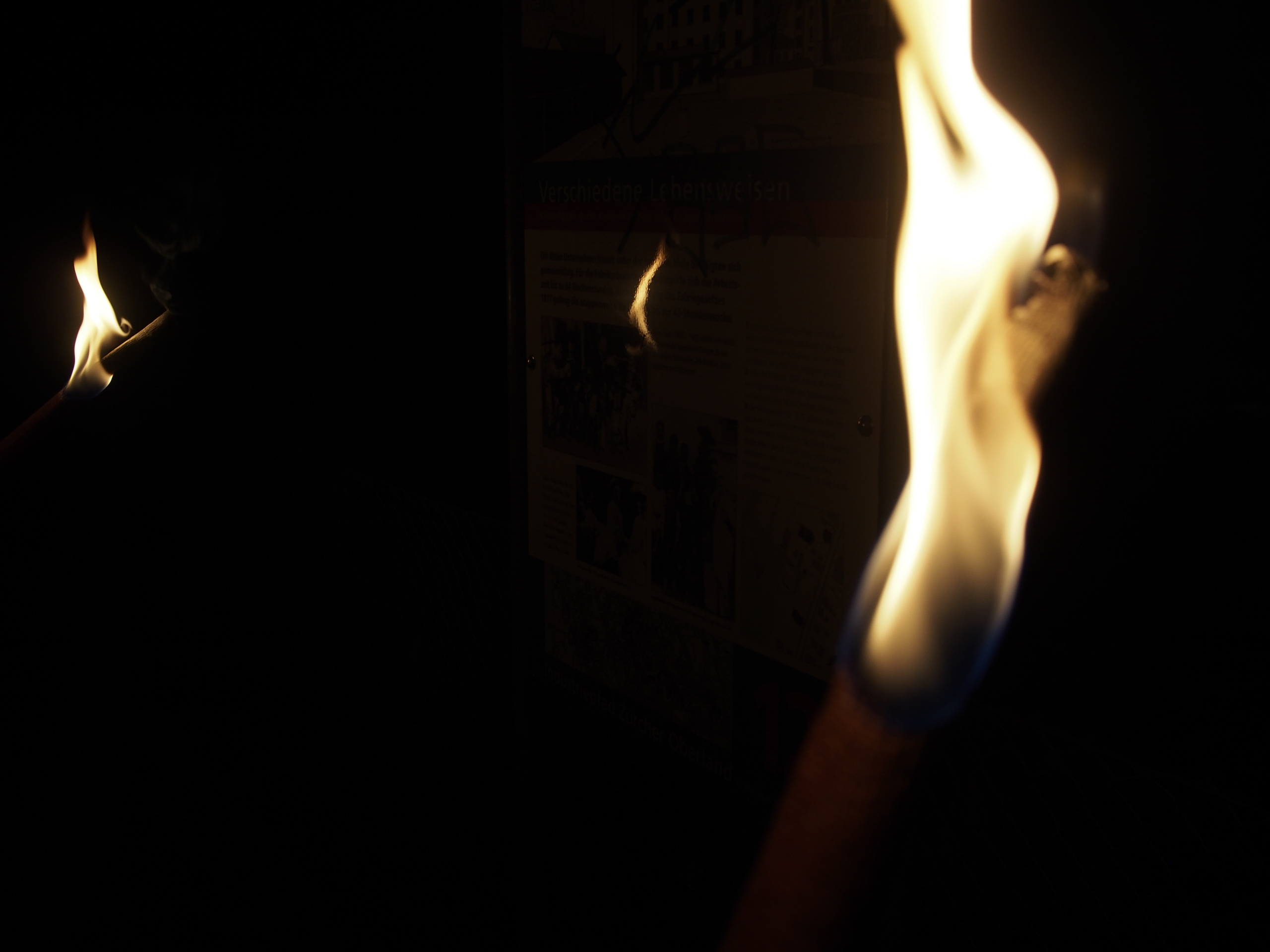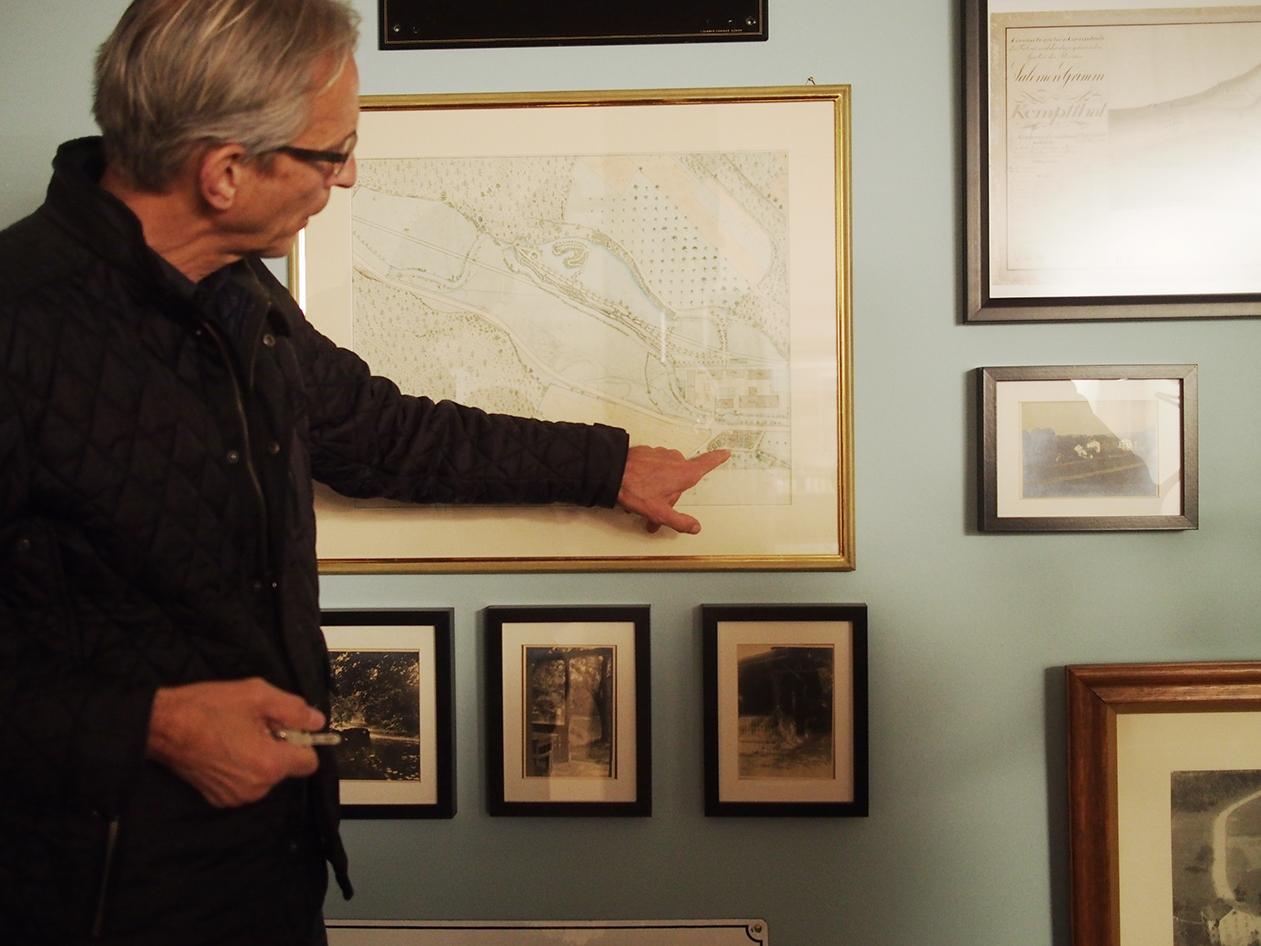A heavy, heavy duty – textile walk
Happening
As part of the exhibition A heavy, heavy duty at Les Complices* Zurich, a textile walk to the Trümpler Areal in Uster took place on November 22, 2016. The former Corrodi & Pfister mechanical spinning and weaving mill was the scene of the Uster fire in 1832, when home workers and small factory owners revolted against the mechanization of spinning and weaving. A chronicle by the Grand Council member Friedrich Ludwig Keller recorded the displeasure of the home workers: “They said that the weaving machines could not be allowed to emerge; the petitions were of no use; if the government did not want to help, they would have to help themselves.”1
Exactly 184 years after the Uster fire, we marched from Uster railroad station to the Aabach and along the riverbank to the Trümpler Areal with burning torches. In 1989, the revolting home workers and small factory owners marched in the same direction to finally set fire to the factory and, with it, the hated new weaving machines.
Today, the area is used for studios and offices. We spoke to Marco Brunner, Managing Director of Trümpler AG, about the current use of the site. Late at night, we developed perspectives on an actualization of insurgent forces and ways of self-organization in the age of biopolitical entanglements.

Participants’ burning torches during the walk to the Trümpler Areal. Photo: Angela Wittwer

Marco Brunner, manager of the Trümpler Areal, points to a historical map of the former Trümpler factory. Photo: Angela Wittwer
Footnotes
1 Friedrich Ludwig Keller: Die gewaltsame Brandstiftung von Uster am 22. November 1832 (The violent arson of Uster on November 22, 1832). Zurich 1833, p. 19.